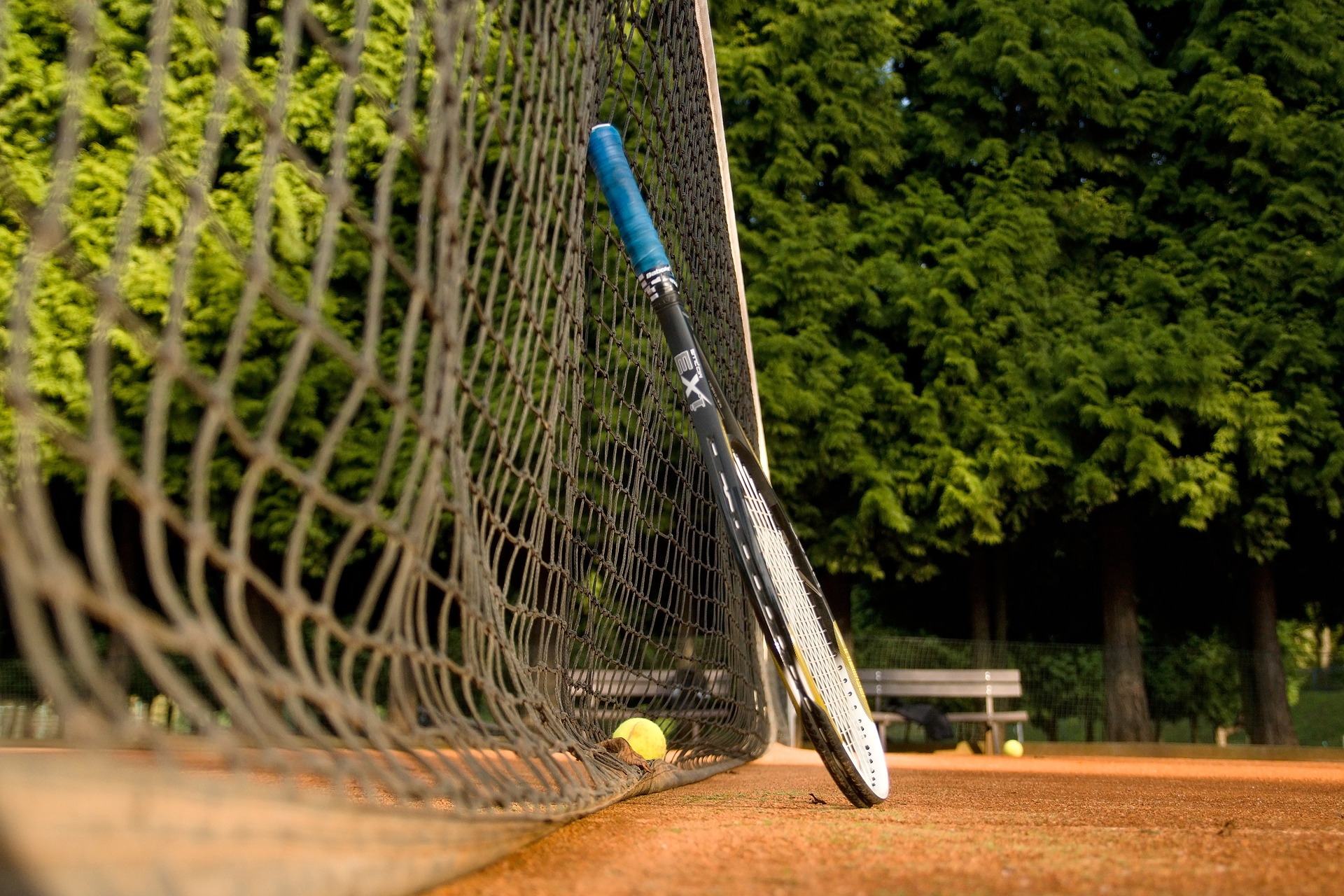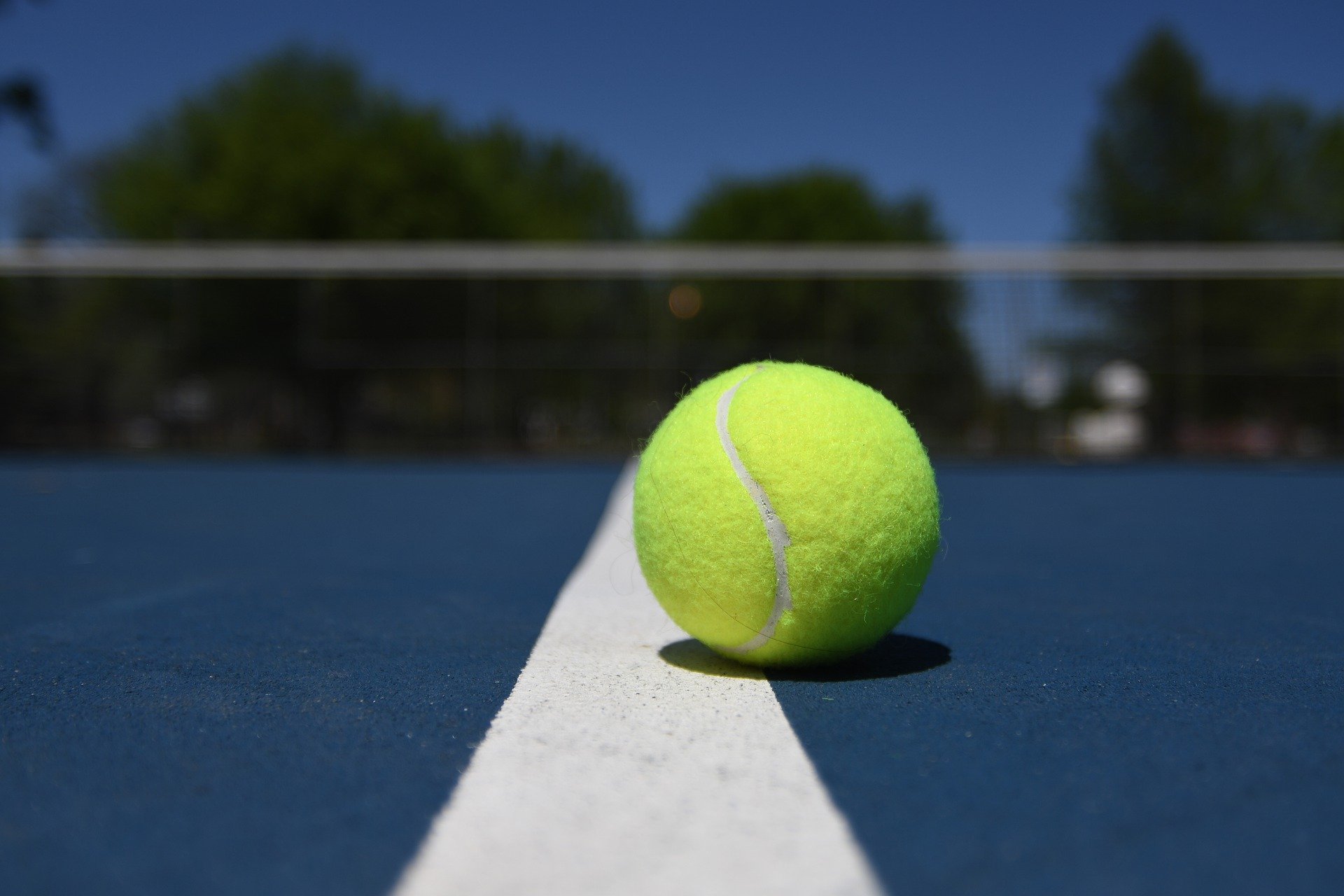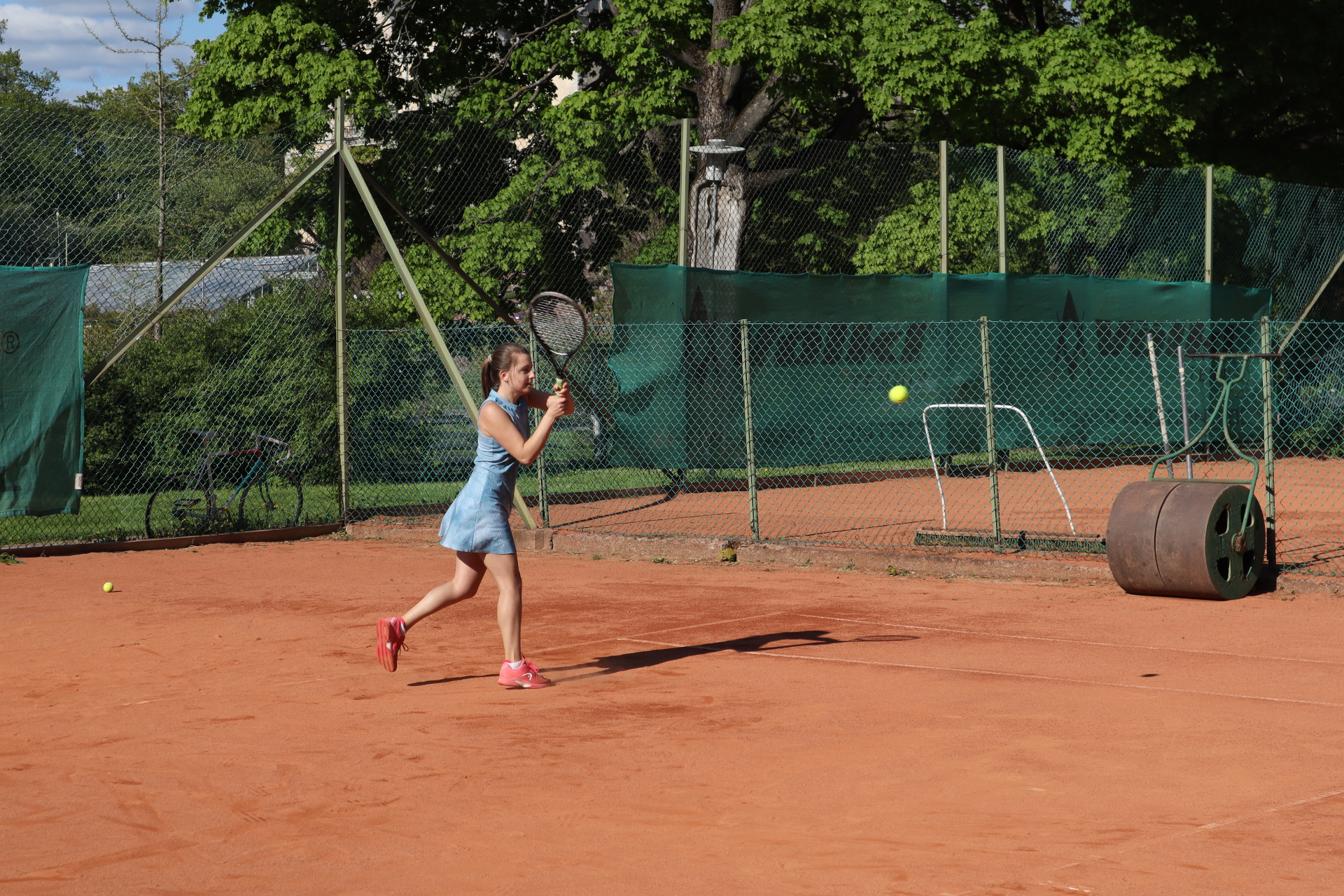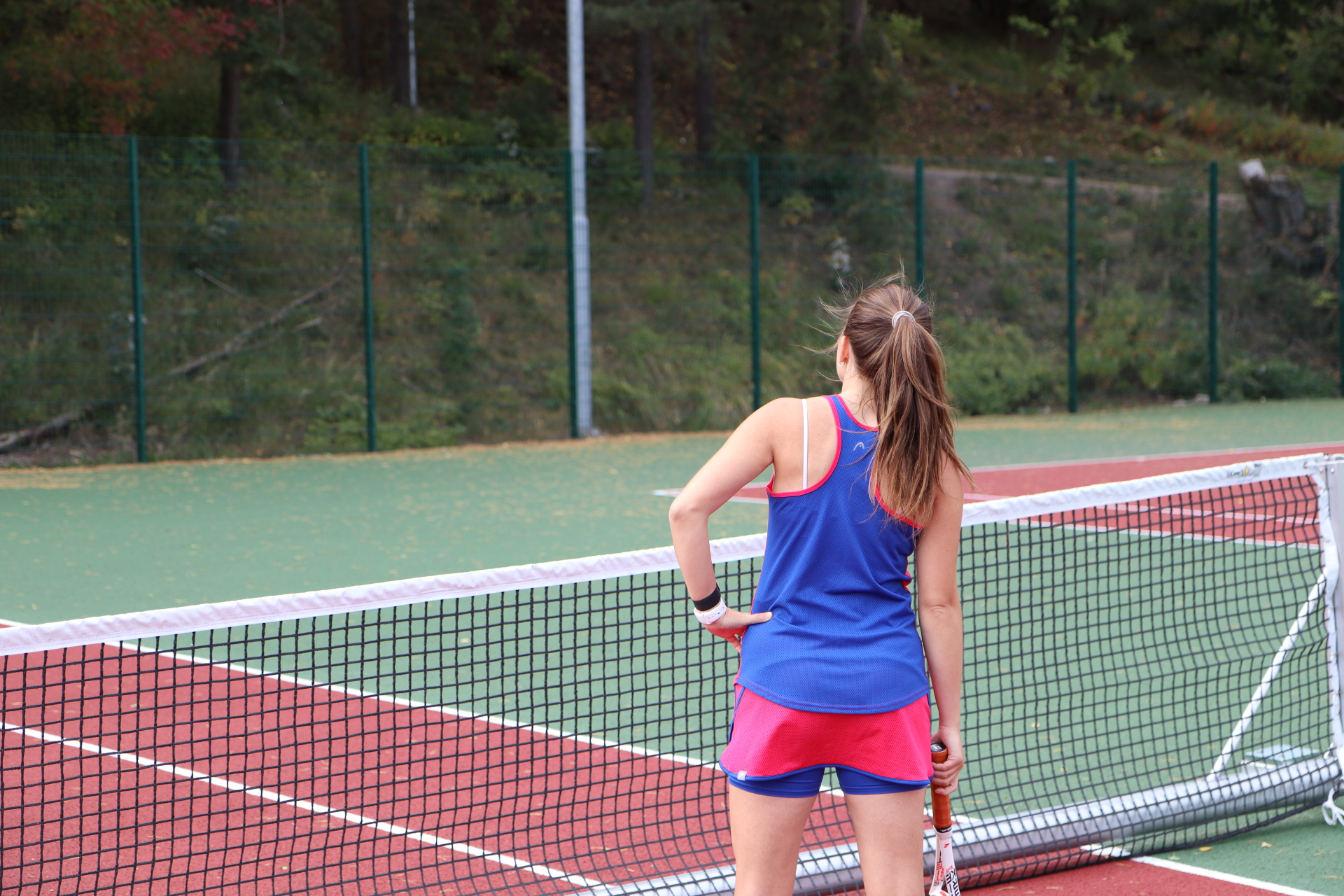Tennis tempo

Ever wondered what the heck your opponent is doing instead of getting ready to return 🤨? Or you're like my old me and sometimes find yourself rushing during the changeover 😰, just because your opponent has already picked up the balls and is ready to serve?
Either way, you can prevent that from happening! Did you know❓
In fact, it's pretty easy once you know about tennis tempo! So easy you'll wonder why no one told you before 🤔
I'm Elena Margaria 👋🏻 and just like you, I'm on a mission to become the best tennis player I can 🥇. Even without a fancy team, or too much talent. Just with a huge desire to make it. That's why Tennis Rematch exists: to share everything I learn along the way 🤓, so you can get better faster, and together we can prove that we can achieve anything we set our mind to 🔥.
So... you ready? Let's get started!
Here's what you're gonna find in this blog post:
What is tennis tempo?
Tennis tempo, aka match tempo, is the speed or pace of a tennis match, and can vary multiple times during the course of the same match 📊. In fact, it's not fixed and, in most cases, you can control it.
How? By controlling the 2 things match tempo is made of:
🔺 the duration of the points ⏳🎾
🔺 the time between the points ⏳💭
Makes sense, doesn't it?
⚠️ But remember, it's not all up to you. You know, even your opponent may be trying to change the tempo, either to disrupt your rhythm when his match is taking a bad turn 🌪 or simply to find his own rhythm!
☝🏻 Plus, keep in mind there's also a few factors affecting the tennis tempo, that you cannot really do much about 👇🏻.
What factors affect tennis tempo?
🔸 The physical conditions, yours and your opponent's 🏋🏼: you may recover quickly after a point, but your opponent may need to use all the time allowed by the rules.
🔸 The pace of the tennis shots, yours and your opponent's ⚡️: you may be very good at playing aggressively, while your opponent may be better at long, slower rallies.
🔸 The momentum of the match 🌊: there might be no match between you and your opponent, or you may be quite even and the match tight.
While these factors are with no doubt affecting tennis tempo, in the end much of it comes down to the personality of the single tennis player 🌈.
Just have a look at the different types of tennis tempo: they're half tennis-related, half personality-related.
Different types of tennis tempo
Just to keep things simple, if we ignore the infinite nuances 🎨, we can identify 3 main types of tennis tempo:
🔹 slow tennis tempo 🐢 → the favorite tennis tempo of those players who love long rallies and need time to think about the next point (and to recover, of course!)
🔹 fast tennis tempo 🐇 → the favorite tennis tempo of those players who like keeping points short and get ready fast between one point and the next
🔹 slast (slow + fast) tennis tempo 🐢/ 🐇 → the favorite tennis tempo of those players who aim at finishing the point fast, but like taking their time before starting the next one
Want some examples? Let's pick some among none other than ATP and WTA players 🏆.
Examples of tennis tempo in the ATP and WTA circuit
How about starting slow, and finishing fast 😉?!
So... who's the king of slow tennis tempo 🐢? Well, I hope you have no doubt 😅. Who else, if not Rafa Nadal? Not only he takes alllll the time between points to execute his bizarre rituals, but he's also practically unbeatable when the rally gets long enough.
And the queen of slast tennis tempo 🐢/ 🐰? Definitely Maria Sharapova. Although she plays aggressively and tends to keep the points very short, she likes to think things through while she recovers before the next point.
Finally, the king of fast tennis tempo 🐰: Roger Federer, who plays at his absolute best when the rallies don't last too much, and doesn't take too long to get ready for the next point. (Not naming Andre Agassi just because he's not playing anymore, otherwise he'd be definitely here, because... well, how to forget 💭).
You get the idea, don't you❓
But please 🙏🏻, now don't think that having a favorite tennis tempo is just a pro thing! That couldn't be further from the truth!
Every player at any level has his own favorite tempo, that is that specific pace which brings out his best tennis 🔝.
Even YOU have one! You may not be aware of it just yet, but it's there 📍! And knowing which one it is would have a tremendous impact on your results. And you know why? Because it would enable you to dictate the tempo of a match 👑, and thus increase your chances of victory.
How to dictate tennis tempo
Controlling match tempo is an incredibly powerful weapon 💣 that can sometimes turn a whole match around. But how can you control it if you don't know what to aim for?
☝🏻 Also, not only is it crucial to know your own favorite tempo, but it's just as crucial to identify your opponent's!
And here's why. Because they're part of the necessary steps 👣 to control tennis tempo in a match 👇🏻:
① know your own favorite tempo ❤️🎯
② identify your opponent's favorite tempo ❤️🔫
③ use this info 👆🏻 to get match tempo as close as possible to your favorite one and / or as far as possible to your opponent's, by affecting either or both:
🔺 the duration of the points ⏳🎾
🔺 the time between the points ⏳💭
To keep points short, play aggressively and take the ball on the rise, so you steal away as much time as possible from your opponent. Also, whenever you have the chance, attack and go to the net to finish the point 💥. Oh, and if you're good at drop shots, don't be cheap and use them: they work like magic in this case!
To speed up things between the points, just head to your position whenever you're ready: most of the time, your opponent will adjust to your rhythm, without even realizing it 😅. Sometimes it's that easy: you do, and they follow along!
To slow points down, instead, take pace off the ball using more top spin and varying the game with slice here and there 🔪. Plus, rely on placement 🔍 rather than power: this will disrupt your opponent's rhythm and makes it much harder for him to keep the pace up.
Finally, to slow things down between the points, you can simply take your time staying put, maybe giving your back to your opponent. Or, if you like being more creative 🎨, you can establish a routine of actions that you can execute in auto-pilot while recovering and thinking of the next point 💭, like adjusting your strings, tying your shoe laces or wiping off your sweat.
But what if the one dictating match tempo is your opponent and not you❓ Luckily, even in this case there are some measures to prevent this from destroying your game 👇🏻.
How to fight change in tennis tempo
Rule #1: realize your opponent is trying to disrupt your rhythm 👀.
⚠️ And mind, however easy and obvious it may sound, catching this while it's happening is not trivial at all ❌.
Nevertheless, it's of absolute importance. 👉🏻 Failing to recognize a change of tempo early enough may cause a disastrous domino effect and lead you to a point of no return very veeeery quickly, trust me. I know this even too well 🤬.
In fact, I still have an open wound because I once failed to realize a radical change of tennis tempo on time. Which is good, because now at least I'm always on my guard 🧐 and I'll never let that derail my match again.
Want to know why it still hurts so much❓ Here's the long story short: in my first match after my comeback I was leading 5-0 and, a bit unexpectedly, playing my best tennis. When suddenly the match took a bad turn 🌪: my opponent started. Slowing. Things. Down.
The more she did 🐢, the faster the match shifted 🐇. And instead of noticing it, I kept going as nothing had changed 🙄, ending up in a confused and pissed state of mind which led to a myriad of unforced errors and ultimately to one of the most burning defeats of my whole life.
So yes, realizing there's being a change of tempo is necessary. But alone it's not enough.
Rule #2: take action and let your opponent know YOU are the one in charge of tuning tennis tempo, not him 👑.
Sometimes this is relatively easy to do 🤙🏻. When your opponent is trying to rush you (and you notice it), all you have to do is know your speed limit and make sure you don't exceed it. No more, no less. There's nothing he can do, except keep trying and hope 🤞🏻 you'll eventually forget your favorite tempo and follow his own.
Other times it can feel nearly impossible 😰. Like when your opponent decides it's time to slow you down: you don't have much choice in this case 🤷🏼♀️, do you? But one thing you can do: you can impose your rhythm by slowing things down even more than he does 🐢🐢. This will help, 💯 guaranteed! He'll feel like he's lost control, and you'll feel like you got it back. And what makes you feel better than being in control❓
Tennis tempo recap
Tennis tempo is not just the speed at which a tennis match is played. It's much more ✨.
It's a tool 🔧 you can use to your advantage to turn around matches that seem lost, or finish off your opponent when he's attempting to disrupt your game by mixing things up a little bit.
But to do so, you need to know everything (or almost) about it. Which is what you've learnt in this blog 👇🏻:
🎾 what is tennis tempo and what's made of (👉🏻 the duration of and between the points), so you can learn to recognize his fluctuations instead of being a victim
🎾 the factors affecting match tempo that are partially or totally out of your control (👉🏻 physical conditions, pace of the shots and match momentum), so you can tune the adjustable ones and accept the others
🎾 the different types of tennis tempo (👉🏻 slow, fast and slast), so you can identify your favorite one and recognize the one of your opponent
🎾 the steps to control match tempo (👉🏻 know yours and your opponent's favorite tempo and use that info to tune the duration of and between the points), so you can bring it as close as possible to your ideal one
🎾 the rules to fight a change in tennis tempo (👉🏻 realize it's happening and take action to get the control back), so you can prevent your matches from derailing and leave your opponent with no chance whatsoever
That was a lot of info, wasn't it❓ Make it yours and you'll win a lot more!
If you liked this post, please leave me a clap (or two). It's a small act for you, but it would mean a lot for me 💕.
Then you're one of us! We're a community of passionate and motivated tennis players who work hard every day 💦 to reach their goals, motivate each other 🔥 to keep going when things get tough and share their own experiences 💬 so everybody can get better faster.

Hungry for more?
Enjoy these tennis bites, they’re just as good! 🤗👇


